The ’80s: A decade of champions and characters
FOOTY in South Australia during the ’80s was a mixture of good, bad and ugly. But what stood out more than anything were the characters and emerging superstars, writes Chris McDermott as he takes another walk down memory lane.
IF FOOTY in the 1970s was the pinnacle of the game in SA, then football in the ‘80s was like a box of chocolates. You never quite knew what you were going to get next.
The decade began as the previous had finished, with Port Adelaide winning the second of three premierships in a row, and with a 17-year-old called Craig Bradley emerging as a future superstar.
Would he choose football or would he choose cricket? There was no longer the freedom to do both.
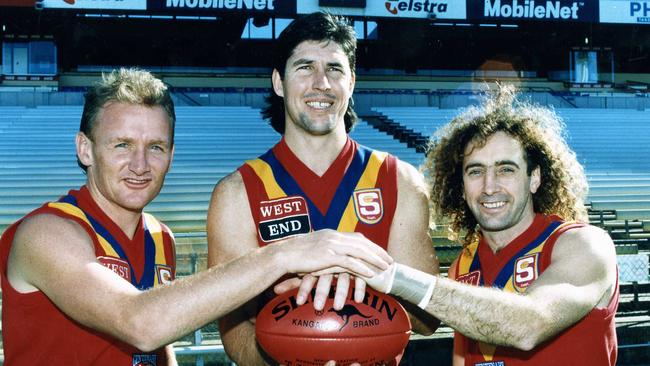
Thankfully, football won and for 98 games with the Magpies we marvelled at the brilliance of this young man.
The ‘80s was the decade of champions. They were heroes of the past and present, but it was the future stars like Bradley who mesmerised us the most.
Stephen Kernahan at Glenelg, Gary McIntosh at Norwood, that pocket rocket John Platten at Central Districts and the two Jarman larrikins at North Adelaide were just some of them.
These six youngsters would inspire their clubs and their state to unprecedented success.
Bradley would win two premierships with Port Adelaide before heading to Carlton and the AFL for two more. Kernahan would win one at the Bay then head across the border in 1986, assuming the captaincy at Carlton in his second season and leading his club to premiership glory that same year.
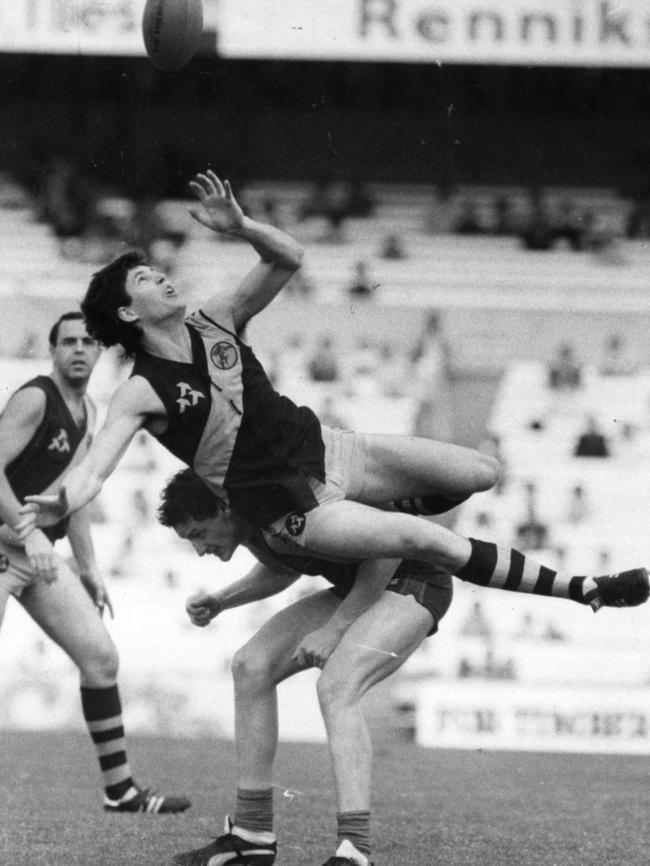
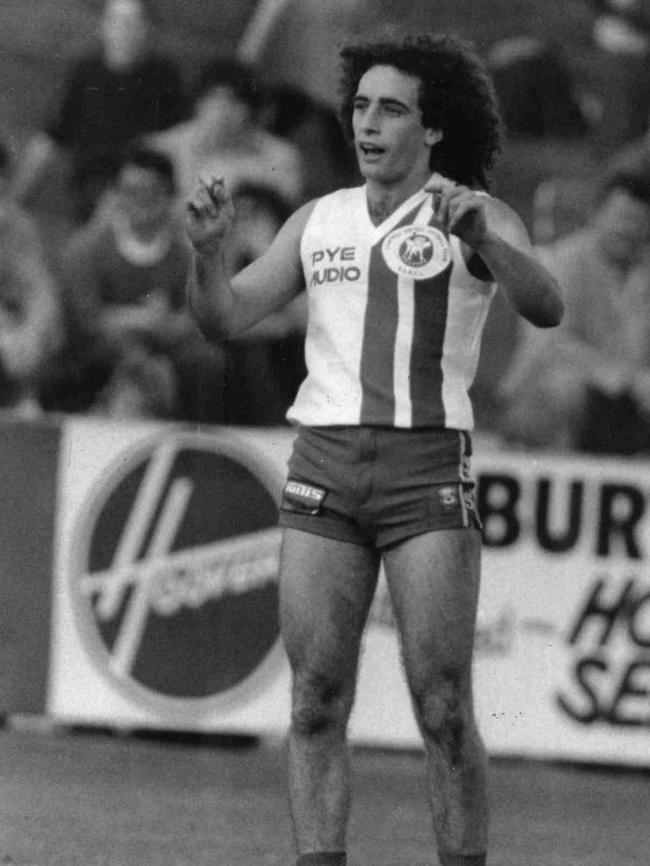
Platten would miss a flag in SA but won a Magarey Medal before moving to Hawthorn and adding a Brownlow Medal and four premierships to his collection. For a bloke who stood 170cm at best, he could mark above his head better than any.
Garry McIntosh was different. A warrior who ate, slept and bled Norwood. Love him or hate him, this man could play like no other.
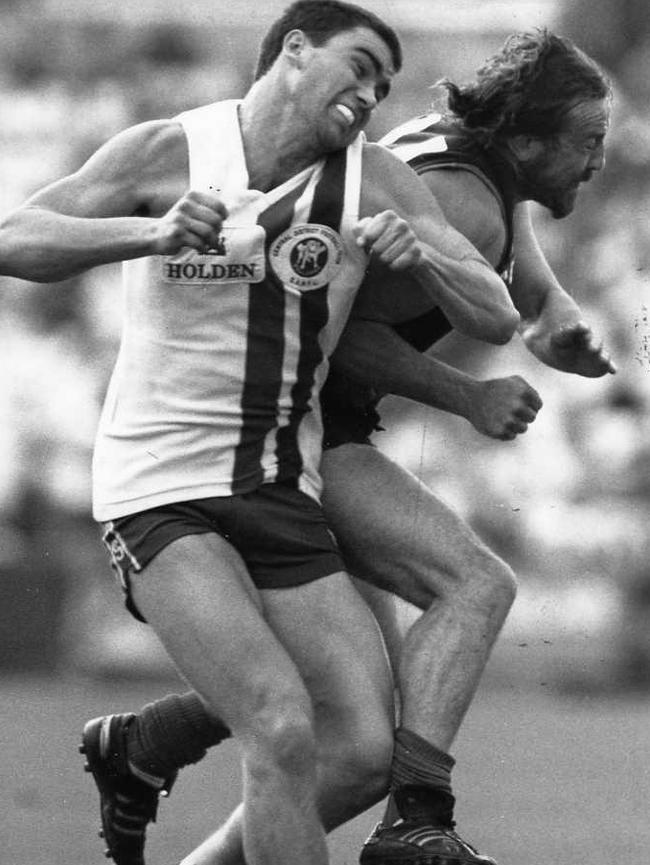
He turned handball into an art form — 35m bullets the likes of which we will never see again. “Macca” possessed the beauty of handball with more than a touch of brute force. He was both the prince and the prince of darkness.
Two premierships in his first three years at Norwood, his two Magarey Medals would come much later.
His beloved Redlegs stood head and shoulders above everything he did. There was nothing he would not sacrifice for his team.
Then came the Jarman brothers. Andrew, a slightly flawed genius who marched to the beat of his own drum. Darren, simply a genius.
No one could harness Andrew. Two Magarey Medals and a premiership later, I still believe he could have been so much better.
Darren ultimately was. Three premierships and a place in the Australian football Hall of Fame says it all.
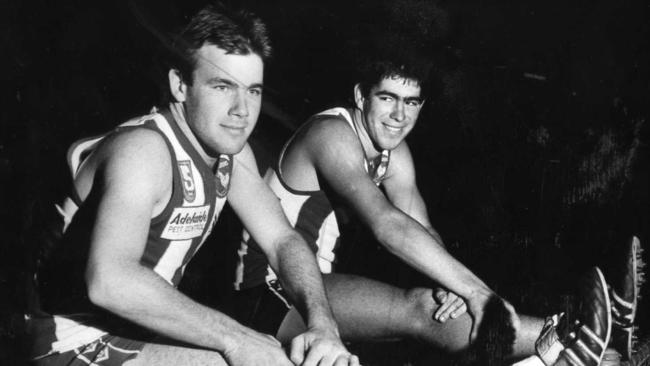
The game in SA during the ‘80s was a mixture of good, bad and ugly.
Russell Ebert, Rick Davies and Malcolm Blight all headed to the coach’s box.
Blight kicked 5.6 in his last state game in WA in 1985 just to let us all know, even at 35, the man could play.
So did the less fashionable Graham Cornes, first at South and then at Glenelg.
His success would be greater than everyone until Blight rose to fame with the Crows in 1997 and ‘98.
The game also got angry. All-in brawls became a regular occurrence. No venue was immune. Who will ever forget Glenelg veteran Neville “Twiggy” Caldwell’s incident with David Grainger in the early ‘80s? Trial by video was born.
And Scott Salisbury’s clashes with Greg Anderson and Richard Champion, or the all-in at The Parade before the opening bounce between Norwood and Central.
“The Ant”, Tony Antrobus at Prospect. The boys at Elizabeth. The veterans at Alberton. There were many.
There was plenty of blood spilt in those very different times. No soft frees for contact below the knees.
No penalty for third-man up. No reports for head high contact, 15m penalties rather than 50m.
No deliberately rushed behinds, no deliberately out of bounds.
It was certainly an easier game to umpire. We even had a beer with the men in white — and they only wore white — after the game.
The ‘80s was the era of the character, so much more than just a player.
Robbie Muir. Trevor Pierson, Rick Davies (the Jumbo Prince), Stephen “Bomber” Clifford, “Zip Zap” Ralph Sewer in a Bay jumper, and Leon Twelftree too
The one and only “Dart”, Grenville Dietrich. The big fella kicked seven against Glenelg one day on Chris Duthy and “Duth” was named the Bays’ best player.
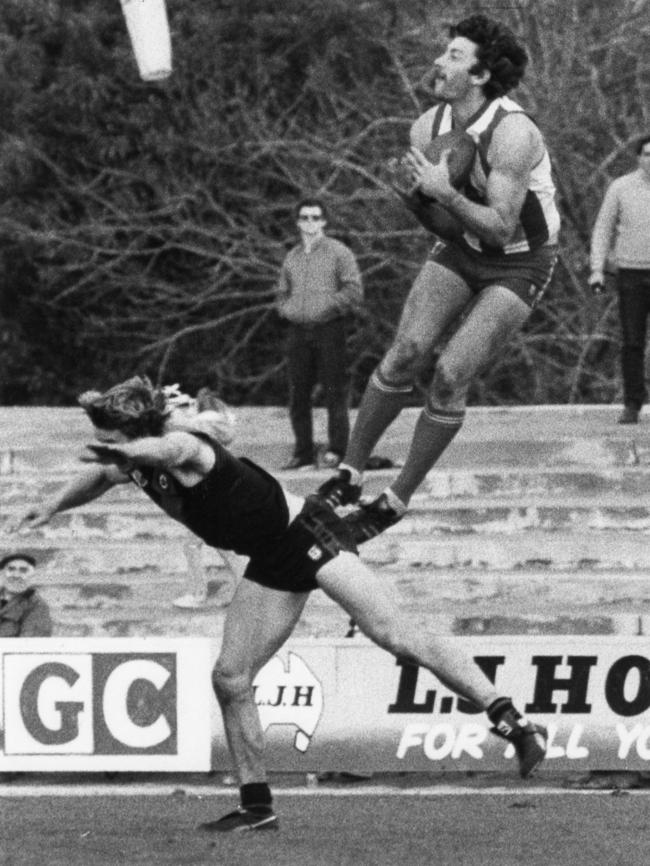
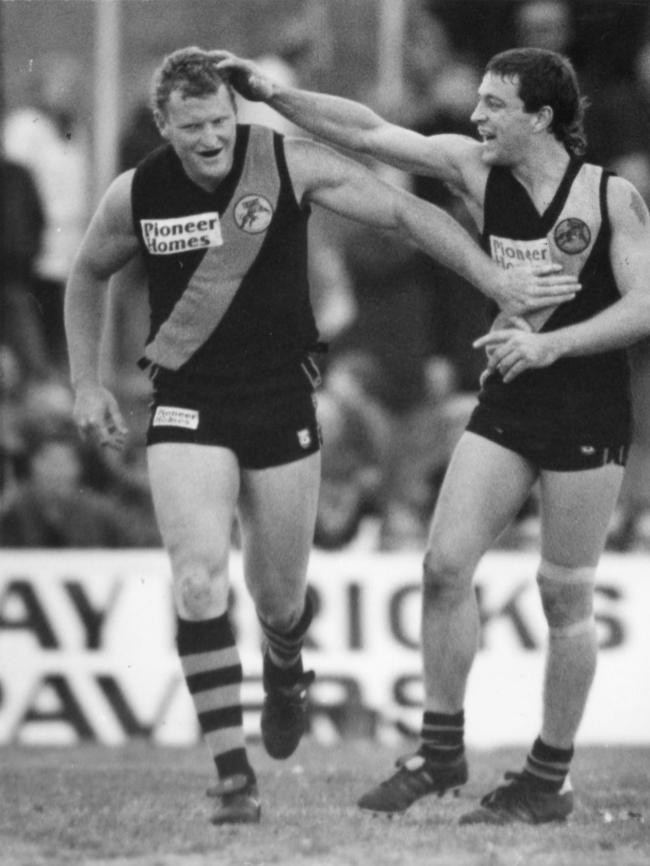
Who could forget John Fidge, or the tragedy of Centrals forward Greg Edwards and an accidental eye poke that cut short his career.
Kernahan lost the Magarey Medal after a one-game suspension for whacking Macca.
There was the rise and fall of Peter Motley — a football tragedy and a human success story.
Finally, the emergence of the AFL. The game was about to change like never before.
In 1987, West Coast and the Brisbane Bears joined the VFL. SA resisted the temptation, but the game was changing.
It was no longer a Saturday afternoon sport. Sydney made Sunday afternoons a feature, North Melbourne took a punt on Friday nights. SA followed suit.
State of Origin Football returned with SA and Victoria engaged in a couple of classics in front of sold-out crowds with the Croweaters the victors on every occasion — except for Macca after Greg Williams knocked his tooth out with a short left just before half-time at Football Park.
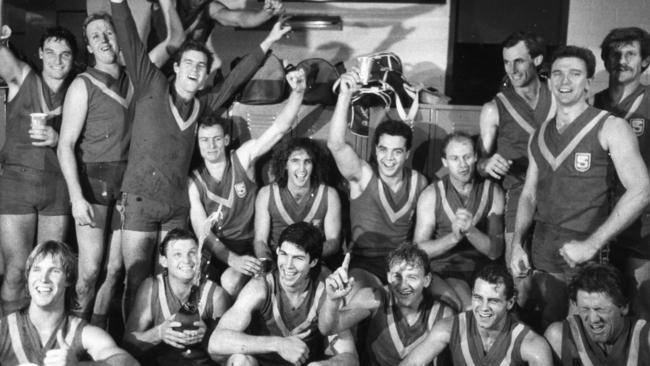
The game also began to broaden its horizons overseas with SA and WA playing a game indoors at BC Stadium in Vancouver.
Michael Nunan was coach and his words as we ran onto the ground for the first time still ring in my ears today.
Each of us was armed with a footy to kick into the 50,000-seat stadium and Mick’s last words to the 22 of us were, “Boys, I think we’ve got too many footballs”.
I think we won but my memory is blurred. I was booked on the next flight home alongside Clayton Lamb for immediate surgery on a torn ACL.
By the end of the ’80s the AFL was calling and someone was going to answer the call.
Would it be Port Adelaide or would it be someone else?
One thing was certain — there will never be another year quite like 1990.
